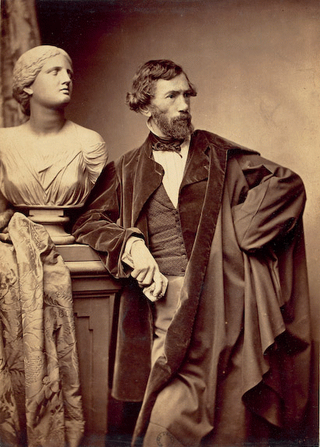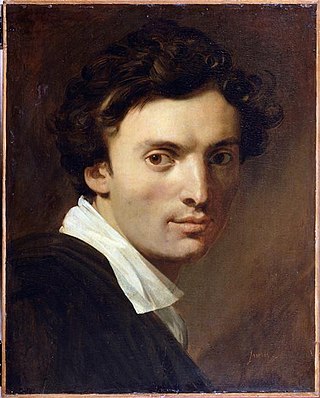Images of Reybaud's bronzes by the Gare Saint-Charles stairway
- "Les fruits"
- "Les vendages"
- "la pêche"
- "Les Fleurs"
- "la moisson"
- "la chasse"
Henri Charles Raybaud (born 4 June 1879 in Marseille-16 August,1942) was a French sculptor.
He studied in Paris under Gabriel Thomas and Jean-Antoine Injalbert and made his debut at the Paris Salon des Artistes Français in 1904 with the work "Le Berger et la mer" a plaster bas-relief now held by Marseille's Musée des Beaux-Arts.
| Name | Location | Date | Notes |
|---|---|---|---|
| "The produce of Provence" | La gare Saint-Charles de Marseille | 1923 to 1924 | This main railway station has a large flight of stairs designed by the architects Eugène Sénès and Léon Arnal and using reinforced concrete. The competition for the designs of the stairway, intended to improve movement between the town centre and the railway station forecourt, was opened in 1911 but the 1914-1918 war delayed completion of the project until 1925. The stairs run from the railway station to the Boulevard d'Athènes. The area is the site of much sculptural work including a group of lions and children by Arry Bitter [1] and the works "Marseille Colonie Grecque" and "Marseille Porte d'Orient" by Auguste Carli. There are also six small bronze groups representing the produce of Provence. These are by Henri Raybaud and cover "les vendages", "les fruits", "la pêche", "les fleurs", "la moisson" and "la chasse". At the bottom of either side of the main stairs are two large sculptures by Louis Botinelly. One, called "Colonies d'Asie", represents colonial Asia and the other, called "Colonies d'Afrique", represents colonial Africa. [2] [3] |
| Name | Location | Date | Notes |
|---|---|---|---|
| "Mireille" | Marseille. Musée des Beaux-arts | A depiction of Frédéric Mistral's famous character. [4] | |
| "L'Orage" | Marseille. Musée des Beaux-arts | 1908 | A plaster bas-relief. [5] |
| Monument to Dom Joseph-Dominique d'Inguimbert | Carpentras | This monument stands in the place de l'Hôpital. The bronze was removed in 1943 with the intention of melting the metal down for re-use but it was retrieved from a foundry in Lyon and re-erected in 1944. | |
| Monument to Frédéric Chevillon | Marseille | 1922 | This monument stands in Marseille's place de la Corderie. Chevillon was killed fighting at Les Éparges in 1915. He was the mayor of Allauch and the parliamentary deputy for Bouches-du-Rhône. In Raybaud's composition, Chevillon stands feet apart whilst to his right an allegory of France pays hommage to him. A more modest monument by Reybaud can be seen in Allauch. |
| Name | Location | Date | Notes |
|---|---|---|---|
| Auriol War memorial (monument aux morts) | Auriol | In Auriol's Cours de Verdun, a winged "angel of victory" stands on a pedestal, her arms aloft. In one hand she holds a crown of laurel and an olive branch in the other. [10] | |
| Trets War memorial (monument aux morts) | Trets | The memorial in Trets' place de la Mairie depicts an "angel of victory" in profile who carries a standard in one hand which appears to flutter in the wind. In the other hand she holds a crown. The original intention was to place a cockerel at the top of the monument but this had to be dropped through lack of funds. The angel wears a helmet and stands on a globe. | |
| Aubagne War memorial (monument aux morts) | Aubagne | 1921 | This memorial with sculptures in Carrara marble stands in Aubagne's place du Maréchal-Foch. On the top of the pedestal the "angel of victory", her wings spread, holds aloft a crown of laurels. She towers above two soldiers who stand in poses of defiance their hands linked. One wears an "Adrian" helmet and the other the beret of a "chasseur alpin". This part of the memorial was sculpted by François Carli. Below the pedestal, a woman, an allegory for Aubagne, stands with a child and draws their attention to the inscriptions on the monument. To her right are several indications of a " new dawn" including a crowing cockerel and the rays of the rising sun. This section of the memorial was executed by Raybaud.  |

Aubagne is a commune in the southern French department of Bouches-du-Rhône. In 2018, it had a population of 47,208. Its inhabitants are known as Aubagnais or Aubagnaises. In 2020, the commune was awarded three flowers by the National Council of Towns and Villages in Bloom in the Competition of cities and villages in Bloom.

François Jouffroy was a French sculptor.

Jean-Pierre Cortot was a French neoclassical sculptor.

Auriol is a commune in the Huveaune valley in the Bouches-du-Rhône department in the Provence-Alpes-Côte d'Azur region of Southern France. In 2017, it had a population of 11,908. Its inhabitants are known as Auriolais or Auriolaises. The commune has been awarded one flower by the National Council of Towns and Villages in Bloom in the Competition of cities and villages in Bloom. Located west of Roquevaire and northwest of Aubagne, it will be served by two stations of the Aubagne tramway when the northern Line T extension opens in 2023.

Félix Charpentier was a French sculptor. His work was part of the sculpture event in the art competition at the 1924 Summer Olympics.
André Abbal (1876–1953) was a French sculptor. He was commissioned to work on several war memorials and this article gives details of his most important work. Best known as a pioneer of "Direct carving" who became known as "L'Apôtre de la Taille Directe".
The sculptor and medalist Amédée Donatien Doublemard was born at Beaurain in Nord and was taught by Francisque Duret. In 1842, he enrolled at the École des Beaux-Arts of Paris and began exhibiting his work at the Paris Salon in 1844. He died in Paris on 20 July 1900. In 1855 he shared the Prix de Rome with Henri Chapu. This entitled him to study at Rome where he stayed for three years. On his return to Paris, he was kept busy creating busts of the rich and famous of the period. He also completed several important public works such as his La France en deuil déposant une couronne sur la tombe des soldats morts pour sa défense, le 19 janvier 1871 for Saint-Quentin, his monument honouring Bon-Adrien Jeannot de Moncey in Paris and his monument to Camille Desmoulins in Guise in the Aisne. He was named a Chevalier de la Légion d'honneur in 1877 and received a variety of prizes and medals including a silver medal at the 1889 Exposition universelle. Félix Charpentier was a pupil of his. He bequeathed to the Institute his collection of art to assist students preparing to compete for the Prix de Rome.
Antoine Sartorio was a French sculptor.
Ary Bitter (1883–1973) was a French artist, best known for his animal sculptures. He was a designer, painter, and sculptor in various mediums including plaster, stone, terracotta and bronze. His work was also produced in biscuit by the Sèvres factory.

Pierre-Marie Poisson was born in Niort on 19 November 1876 and died in Paris on 11 January 1953. He was a French sculptor and medallist.
Marcel Gaumont was a French sculptor born on 27 January 1880 in Tours. He died in Paris on 20 November 1962.
Georges Saupique was a French sculptor born on 17 May 1889 in Paris. He died in Paris on 8 May 1961.
Pierre Lenoir was a French sculptor.